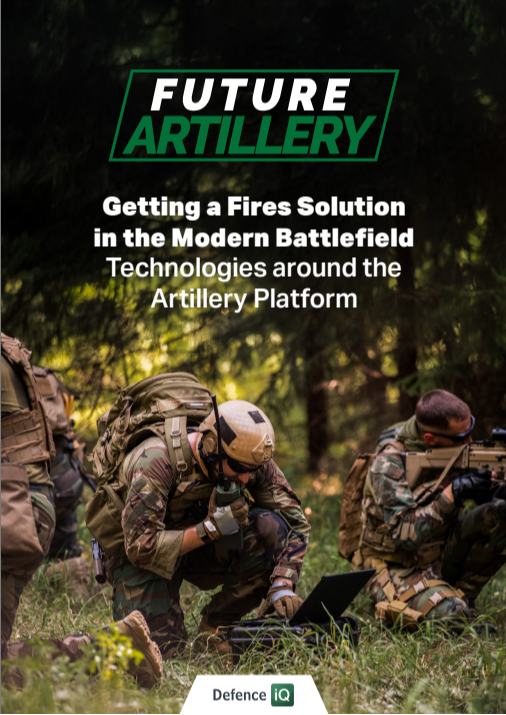Content Library

Future Artillery 2025 Agenda
The 24th annual Future Artillery conference remains the world’s most influential conference on the artillery topic. We will see new topics such as supply and stockpiles, training and doctrine, loitering munitions and advanced launched effects and many more, all to be d ...
Partnership Opportunities

Future Artillery 2025 Sponsorship & Exhibition Opportunities
Welcome to the 24th Annual Future Artillery Conference – the world’s premier event dedicated to the advancement of artillery systems, technology, and strategy. This globally renowned gathering brings together 500+ senior leaders, military experts, and industry innovators from over 30 nations to address critical challenges and drive forward-deployed artillery solutions.
Download our Sponsorship and Exhibition Prospectus to explore the full range of opportunities available to position your brand as a leader in artillery advancements.
Align your company with the industry’s most influential players at the 2025 Future Artillery Conference!
Event Information

Future Artillery 2025 Attendee Snapshot | See Who’s Attending
Future Artillery 2025 is bringing together the world’s leading military commanders, procurement specialists, and industry pioneers to shape the future of artillery, firepower, and forward-deployment strategies. With an expanded expert speaker faculty and the most diverse attendee lineup yet, this is the must-attend event for those driving next-generation capabilities.
Find out which senior military decision-makers and top-tier industry leaders are joining this year’s premier artillery event.

Future Artillery 2024 Post-Show Report
Defence iQ remains at the forefront of the Artillery discussion with its Future Artillery conferences, where we invite the top experts and decision-makers in government, industry, and academia from across the globe.
The 2024 conference provided speakers with the opportunity to present the latest programmes, technologies, and thoughts. It also provided an intimate environment for invaluable one-to-ones with our delegates and sponsors. With our 2024 Post-Show Report, we highlight some of our successes while also showing how we are going to push the topic even further.
Industry Insights

[Exclusive Whitepaper] Getting a Fires Solution in the Modern Battlefield: Technologies around the Artillery Platform
As modern conflicts evolve, so do the challenges of achieving rapid, effective fire solutions. This exclusive whitepaper explores the latest advancements in artillery, C5ISTAR integration, and battlefield survivability - offering critical insights into the technologies shaping the future of firepower.

[Exclusive Interview] An ARRC perspective on Joint Fires - Insights from Brigadier Rob Alston
Unlock Exclusive Insights into NATO's Joint Fires Strategy
How is NATO adapting its artillery strategies for the future battlefield? In this exclusive interview, Brigadier Rob Alston, Chief of Joint Fires and Influence at NATO Allied Rapid Reaction Corps (ARRC), shares his insights on the evolving role of joint fires, the integration of lethal and non-lethal effects, and how modern warfare is reshaping command and targeting strategies.
With advancements in long-range precision munitions, data-driven targeting, and multi-domain coordination, NATO is redefining its approach to massed fires and strategic deployment. But what challenges remain? And how is NATO ensuring its forces are combat-ready at all times?
Download the full interview now to explore how NATO’s firepower is evolving for the conflicts of tomorrow.

International Artillery Market Report 2025-2029
At a Compound Annual Growth Rate (CAGR) of 4.2%, combined with an increasingly complex battlefield, demands for artillery platforms are not only increasing in quantity but changing in nature. As forces shift to near-peer deterrence, new mobility, targeting, range, networking, and lethality capabilities are required. This report covers the artillery sector's most critical programmes, spending, and forecasts. This report covers programmes related to:
- Gun/Tube artillery
- Rocket Artillery
- Precision Ammunition
- Loitering Munitions
- Target Acquisition Technologies such as AI
- Coastal Artillery

Mobilizing Artillery, Interview with Leon L. Rogers II, Project Manager, Combat Ammunition Systems (PM CAS), JPEO Armaments & Ammunition US Army
Despite all the advances in technology, artillery remains a core part of any army. We were very fortunate to interview Colonel Leon L. Rogers II, Project Manager, Combat Ammunition Systems (PM CAS), from the JPEO Armaments & Ammunition. In this piece, Colonel Rogers dives into the latest development and challenges faced by the JPEO Armaments & Ammunition. An essential piece of reading for anyone interested in the JPEO’s wishes from industry.





